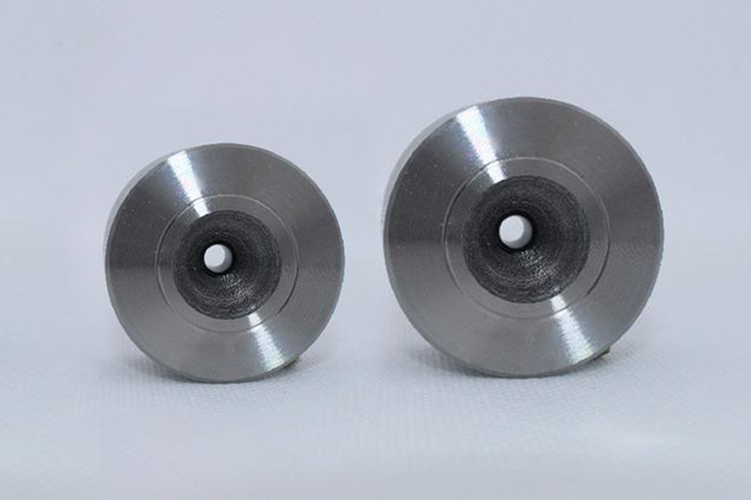Pos:
Home KnowledgeTechnologyDiamond Wire Drawing Die: A Sharp Tool for Precision Machining of Metal WireIn modern industrial manufacturing, especially in the field of metal wire processing, diamond wire drawing dies play a crucial role. Diamond has high thermal conductivity (1000-2000W/(m.K)), high hardness (Mohs hardness 10), chemical stability and other characteristics. Drawing dies made of diamond have good wear resistance, long service life, excellent thermal performance and high-temperature oxidation resistance, which can significantly improve the efficiency and accuracy of wire drawing.
A wire drawing die is a type of die with precise inner hole shape, in which metal wire is gradually compressed through the die hole during the drawing process, forming the required cross-sectional area shape and size. A complete wire drawing mold mainly consists of a core and a sleeve, with the core mainly composed of five parts: inlet area, lubrication area, working area, sizing area, and outlet area. The inner holes of diamond wire drawing dies are usually precision ground to ensure the dimensional accuracy and surface smoothness of the wire. Its small pore size variation can control the cross-sectional shape of metal wires, achieving precision at the micrometer level.
According to the different types of materials, wire drawing dies can be divided into alloy steel dies, hard alloy dies, natural diamond dies, polycrystalline diamond dies, CVD diamond dies, and ceramic dies.
1. Alloy steel molds, which are easy to make but have poor wear resistance and short lifespan, have been basically phased out;
2. Natural diamond has high hardness and good wear resistance, but it is the most expensive, brittle, and difficult to process. At the same time, due to the anisotropy of natural diamond, the hardness varies greatly in the radial range. Therefore, it is generally suitable for natural diamond molds and is only suitable for wires with a diameter of less than 1.2mm;
3. Polycrystalline diamond has high hardness, good wear resistance, strong impact resistance, and exhibits isotropy at the macro level, without the phenomenon of intensified radial wear. Therefore, it is widely used in the wire drawing industry;
4. Ceramic materials have higher hardness, high temperature resistance, and wear resistance than hard alloys, but their toughness, thermal shock, and processing difficulties make them unsuitable for large-scale applications.
5. Diamond wire drawing dies have high hardness, good wear resistance, low friction coefficient, high surface smoothness, and excellent thermal stability. They can be used for drawing stainless steel wire, tungsten wire, molybdenum wire, copper wire, aluminum wire, etc. They are ideal materials for metal wire drawing.
Although different material drawing dies have their own suitable processing ranges, overall, the order of wear resistance of various material drawing dies from high to low is: diamond drawing dies>ceramic drawing dies>hard alloy dies>alloy steel dies.

CSMH is committed to the research and production of diamond materials, with core products including diamond heat sinks, diamond wafers, diamond windows, diamond heterojunction integrated composite substrates, etc. Among them, diamond wire drawing dies produced by plasma chemical vapor deposition (MPCVD) method have high hardness, good wear resistance, high smoothness, and stable quality, making them excellent materials for metal wire processing, greatly improving wire drawing accuracy and production efficiency.
 闽ICP备2021005558号-1
闽ICP备2021005558号-1Leave A Message